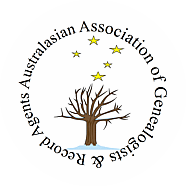Considering the imperfect family
A client, who had happily been researching his family for many years, approached me recently with a dilemma in his family tree. After a DNA test put him in contact with ‘cousins’ an argument ensued. He insisted his great grandfather was Edward Seymour whilst the newly identified relation insisted her great grandfather was George Seymour. There was no dispute about their great grandmother Fanny Parker.
I was approached to settle the argument. Both relations had the documentary evidence that they were correct and shared those documents with each other and me.
At this point I could detail the documents and their contents but my object here is to highlight that many hobby-genealogists lack the ability to analyse the documents they have and see their ‘family’ as opposed to their ancestors.
The documents told the story of the marriage in 1871 of Seymour and Parker, the births of their three daughters, Seymour deserting his family in 1877 and the police trying to locate him. The daughters were taken off Fanny because of their neglect and put into care in 1883.
In 1894 Fanny Seymour was imprisoned for arson and her 8-year-old son, Percy Seymour, was put into care. His birth occurred about 1885 and was not registered in VIC or NSW. The marriage and death certificates of Percy Seymour give his father’s name as Edward Seymour, a jockey. When Percy went into government care in 1894 his father was noted as dead. On Fanny Seymour’s death certificate in 1924 only one child was listed, Percy. Percy’s death in 1934 listed him as being born in Toronto Canada. His child welfare record suggests he was probably born in Wangaratta VIC.
Despite having all the documents, my client could not put the story together, neither could his relative. Both had used their documents to put together their individual family trees. What was needed was to consider the family as a unit, to develop a chronology and an experienced eye to put the logical story together. Both accepted the story I wove and that they did not share the same great grandfather. Both were correct. Who was Edward Seymour? My guess it is a name made-up by Fanny. I have recommended that my client, a descendant of ‘Edward Seymour’ do a Y-chromosome test in the hope it can trace his main male line.
I have had estate matters where a public trustee had undertaken the research into an intestacy. They had arranged all their evidence by relatives’ names but never considered the evidence as a family. As such they could not identify the problems with their research. Thinking of the problem as a family rather than individuals was the answer.
I am continuously surprised by clients who are in ‘all of a muddle’ over what I consider a simple family tree. If one considers the family not merely a collection of disconnected records, but as a family, one can ‘fit’ the records together into a logical story – the answer. Families are never standard. The answer for a hobbyist is often a chronology of events. I consider this ‘muddle’ is exacerbated by people keeping their trees online as an undetailed graphical representation of their family. They see their family as people joined by lines rather than people joined by complicated relationships.
April 2022

